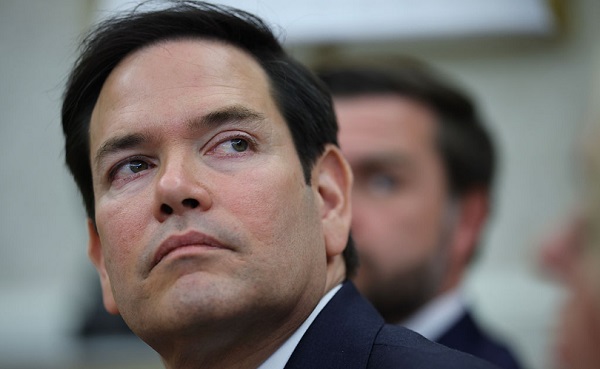Alberta
The Government of Alberta’s Report on Their COVID-19 Pandemic Response: Bryam Bridle

From COVID Chronicles

It confirms big problems with public health and provides a roadmap for how to do it right the next time around; let justice and healing begin.
The Government of Alberta has released a report following an investigation into the province’s response to the declaration of the COVID-19 pandemic.
The announcement can be found in this X post from, Eric Bouchard, a member of Alberta’s legislative assembly.

The report itself can be found here.
This is a report that is well-worth reading from beginning to end. The government identified numerous major problems with the handling of the pandemic response by Alberta Health Services. It is important to note that the current government in Alberta is not responsible for how the province responded to COVID-19. That responsibility falls upon the shoulders of the previous government. Thankfully, the current government is interested in knowing the truth, the whole truth and nothing but the truth. They also believe in being transparent with the public that they serve.
One of my biggest concerns from the report is identified in the opening letter where it states, “Our quest for answers was impeded by barriers, including reluctance from key stakeholders to engage with the Task Force’s mandate“. Shame on those involved with developing and implementing COVID-19 policies that failed to cooperate with officials from a sitting government that launched this investigation for the wellbeing of the public. The lack of transparency from whomever these key stakeholders are is unacceptable.
What I appreciate most about the report is that it is constructively critical, providing a path forward, that includes refocusing the mandate of public health services back onto the public as the primary clientele, as opposed to acting in the service of pharmaceutical companies. It serves as a blueprint to guide future responses. The path forward is based largely on traditional best practices that were established by truly following the science and forged in the successful management of historical outbreaks. It is highly reminiscent of the national pandemic response plans that existed in 2020; the ones that were supposed to be implemented for COVID-19 but that were thrown out within days of the pandemic being declared.
I can’t help but wonder how many lives could have been saved, how many hospitalizations could have been prevented, and how much healthier our population and current economies would be if this far more appropriate, science-based plan would have been implemented back in 2020.
This report from the Government of Alberta provides a precedent for the world as overwhelming numbers of people wake up and realize the need for massive reforms within public health.
Further, the report validates many of the concerns that a lot of people had about the response to COVID-19. The totality of evidence highlights how egregious it was to have vilified critical thinkers who simply wanted to engage in robust discussions out of genuine concerns for others and not fall victim to propaganda. Firing people who didn’t want to be coerced into having experimental medical interventions and debatable policies thrust upon them, de-licensing and disciplining independent-thinking health care professionals, and censoring experts under the nefarious disguise of ‘combating misinformation’ and ‘fact checking’; THEY WERE ALL EGREGIOUS WRONGS.
There should be fallout from a damning report like this. The gross mismanagement of COVID-19 has created a huge hot mess. The path forward starts with acknowledging this. Then we need to plot a course to navigate through this mess and thoroughly clean it up. These are essential if there is ever to be healing for all those that were victimized by power brokers that blindly followed propaganda and bought into the hatred and divisive tactics that were passionately modelled by the prime minister on down.
Building on this report, I am honoured to have been invited to speak at an upcoming event in Alberta. It is An Injection of Truth: Healing Humanity.

My talk will dovetail with this report from the Government of Alberta. The event is going to focus on the four pillars of healing. My presentation will start with ripping off the scab and exposing lies from public health agencies that contributed to a myriad of problems within the pandemic response. It will transition into providing some practical recommendations with respect to where we go from here.
Please consider posting your thoughts about this report in the comments section. Do you agree with aspects? Disagree with others? Were criticisms too light or too harsh? Were key issues missed? What do you think about the ideas for moving forward? This is opportunity to provide feedback. You have a sitting government that is showing a willingness to listen to all parties and perspectives. I will share feedback with the Members of the Legislative Assembly that I will be meeting in Alberta on March 3rd.

Alberta
Red Deer Justice Centre Grand Opening: Building access to justice for Albertans

The new Red Deer Justice Centre will help Albertans resolve their legal matters faster.
Albertans deserve to have access to a fair, accessible and transparent justice system. Modernizing Alberta’s courthouse infrastructure will help make sure Alberta’s justice system runs efficiently and meets the needs of the province’s growing population.
Alberta’s government has invested $191 million to build the new Red Deer Justice Centre, increasing the number of courtrooms from eight to 12, allowing more cases to be heard at one time.
“Modern, accessible courthouses and streamlined services not only strengthen our justice
system – they build safer, stronger communities across the province. Investing in the new Red Deer Justice Centre is vital to helping our justice system operate more efficiently, and will give people in Red Deer and across central Alberta better access to justice.”

Government of Alberta and Judiciary representatives with special guests at the Red Deer Justice Centre plaque unveiling event April 22, 2025.
On March 3, all court services in Red Deer began operating out of the new justice centre. The new justice centre has 12 courtrooms fully built and equipped with video-conference equipment to allow witnesses to attend remotely if they cannot travel, and vulnerable witnesses to testify from outside the courtroom.
The new justice centre also has spaces for people taking alternative approaches to the traditional courtroom trial process, with the three new suites for judicial dispute resolution services, a specific suite for other dispute resolution services, such as family mediation and civil mediation, and a new Indigenous courtroom with dedicated venting for smudging purposes.
“We are very excited about this new courthouse for central Alberta. Investing in the places where people seek justice shows respect for the rights of all Albertans. The Red Deer Justice Centre fills a significant infrastructure need for this rapidly growing part of the province. It is also an important symbol of the rule of law, meaning that none of us are above the law, and there is an independent judiciary to decide disputes. This is essential for a healthy functioning democracy.”
“Public safety and access to justice go hand in hand. With this investment in the new Red Deer Justice Centre, Alberta’s government is ensuring that communities are safer, legal matters are resolved more efficiently and all Albertans get the support they need.”
“This state-of-the-art facility will serve the people of Red Deer and surrounding communities for generations. Our team at Infrastructure is incredibly proud of the work done to plan, design and build this project. I want to thank everyone, at all levels, who helped make this project a reality.”
Budget 2025 is meeting the challenge faced by Alberta with continued investments in education and health, lower taxes for families and a focus on the economy.

Quick facts
- The new Red Deer Justice Centre is 312,000 sq ft (29,000 m2). (The old courthouse is 98,780 sq ft (9,177 m2)).
- The approved project funding for the Red Deer Justice Centre is about $191 million.
Alberta
CPP another example of Albertans’ outsized contribution to Canada

From the Fraser Institute
By Tegan Hill
Amid the economic uncertainty fuelled by Trump’s trade war, its perhaps more important than ever to understand Alberta’s crucial role in the federation and its outsized contribution to programs such as the Canada Pension Plan (CPP).
From 1981 to 2022, Albertan’s net contribution to the CPP—meaning the amount Albertans paid into the program over and above what retirees in Alberta received in CPP payments—was $53.6 billion. In 2022 (the latest year of available data), Albertans’ net contribution to the CPP was $3.0 billion.
During that same period (1981 to 2022), British Columbia was the only other province where residents paid more into the CPP than retirees received in benefits—and Alberta’s contribution was six times greater than B.C.’s contribution. Put differently, residents in seven out of the nine provinces that participate in the CPP (Quebec has its own plan) receive more back in benefits than they contribute to the program.
Albertans pay an outsized contribution to federal and national programs, including the CPP because of the province’s relatively high rates of employment, higher average incomes and younger population (i.e. more workers pay into the CPP and less retirees take from it).
Put simply, Albertan workers have been helping fund the retirement of Canadians from coast to coast for decades, and without Alberta, the CPP would look much different.
How different?
If Alberta withdrew from the CPP and established its own standalone provincial pension plan, Alberta workers would receive the same retirement benefits but at a lower cost (i.e. lower CPP contribution rate deducted from our paycheques) than other Canadians, while the contribution rate—essentially the CPP tax rate—to fund the program would likely need to increase for the rest of the country to maintain the same benefits.
And given current demographic projections, immigration patterns and Alberta’s long history of leading the provinces in economic growth, Albertan workers will likely continue to pay more into the CPP than Albertan retirees get back from it.
Therefore, considering Alberta’s crucial role in national programs, the next federal government—whoever that may be—should undo and prevent policies that negatively impact the province and Albertans ability to contribute to Canada. Think of Bill C-69 (which imposes complex, uncertain and onerous review requirements on major energy projects), Bill C-48 (which bans large oil tankers off B.C.’s northern coast and limits access to Asian markets), an arbitrary cap on oil and gas emissions, numerous other “net-zero” targets, and so on.
Canada faces serious economic challenges, including a trade war with the United States. In times like this, it’s important to remember Alberta’s crucial role in the federation and the outsized contributions of Alberta workers to the wellbeing of Canadians across the country.
-

 2025 Federal Election1 day ago
2025 Federal Election1 day agoCanada’s press tries to turn the gender debate into a non-issue, pretend it’s not happening
-

 International1 day ago
International1 day agoPope Francis’ body on display at the Vatican until Friday
-

 2025 Federal Election2 days ago
2025 Federal Election2 days agoBREAKING: THE FEDERAL BRIEF THAT SHOULD SINK CARNEY
-

 Media2 days ago
Media2 days agoCBC retracts false claims about residential schools after accusing Rebel News of ‘misinformation’
-

 International2 days ago
International2 days agoNew York Times publishes chilling new justification for assisted suicide
-

 2025 Federal Election1 hour ago
2025 Federal Election1 hour agoStudy links B.C.’s drug policies to more overdoses, but researchers urge caution
-

 conflict22 hours ago
conflict22 hours agoMarco Rubio says US could soon ‘move on’ from Ukraine conflict: ‘This is not our war’
-

 Business18 hours ago
Business18 hours agoChinese firm unveils palm-based biometric ID payments, sparking fresh privacy concerns






